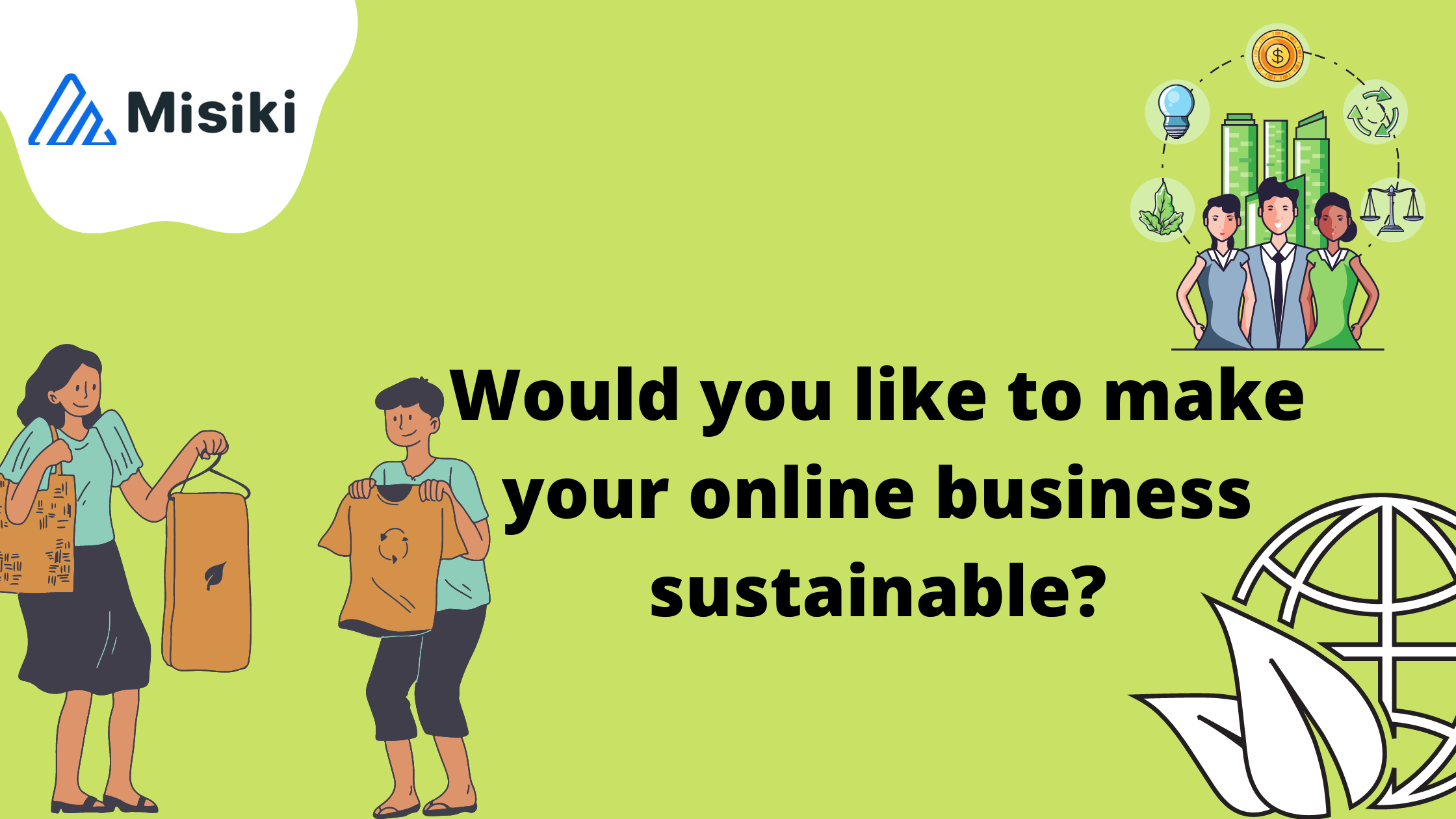Would you like to make your online business sustainable?

Creating an eco-friendly online store helps attract more customers, even though being sustainable is not necessary… Yet. As customers become more eco-conscious, stress on companies continues to build up through regulations and social pressure. Ecommerce will not and should not be left out. What Is Sustainability?
Sustainability focuses on creating social and economic systems that benefit all life, including those currently living and future generations. Sustainable practices aim to support ecological, human, and economic vitality.
Let us find out some sustainability principles businesses should follow:
Why Some Online Stores Aren’t Eco-Friendly
Shopping online is faster and more convenient than the conventional shopping methodologies. Unfortunately, this convenience often comes at the expense of the environment. For example, e-commerce giants like Amazon, alone, emit 44.4 million tons of carbon dioxide into the atmosphere per year while transporting orders. That’s more emissions than from the countries of Sweden or New Zealand! In fact, more than half of the world’s solid waste comes from the packaging industry.
Now, here is how e-commerce sector affects the environment:
How to Make Your Online Store More Eco-Friendly
The sustainability issue in e-commerce is closely related mostly to brand values. A company’s commitment to environmental preservation attracts loyal customers who share those values. The main challenge is to combine sustainability with profitability.
So how can a business owner make online shopping in their store more sustainable, while making a profit? Here are a few ways to start:
Offer More Eco-Friendly Delivery Options
Some carriers are increasingly focusing on eco-friendly ways of transportation. Examples are delivering via hybrid and electric cars, electric scooters, bicycles, and drones.
Give Up Plastic Packaging Whenever Possible
For example, Zara has completely abandoned plastic in favor of paper. It has also launched a cosmetics collection in recyclable and budget-friendly packaging made of recycled cardboard.
Use Refillable Packaging
Here’s how it works: a customer buys a product in refillable packaging, say a bottle or a jar. When they run out of the product, they buy a refill (usually at a discounted price) and replenish the bottle or jar with that refill. This reduces waste and promotes reusing goods, the often ignored sides of the sustainability triangle. Online stores like Bite have implemented a program that reuses packing and ultimately reduces waste.
Keep Returned Items
Products returned to the seller are often sent to a landfill. In the best-case scenario, returns are repackaged and resold, at least at a discounted price. Companies like REI and Patagonia have programs that not only resell returned items but take gently used items and sell them. If that doesn’t work for your company, you can also give returned products to a charity, or recycle them.
Give Up Free Returns
Online stores often offer free returns. Shoppers take advantage of that and order more than they planned. If there is no “free returns” option, customers will be more thoughtful and responsible when shopping online.
Don’t Use Large Packaging for Small Products
Online stores often buy standard-sized boxes in batches and fill the empty space with packing materials when shipping products. That increases the amount of solid waste. Even if you are using sustainable materials, it is always better to use less.
Write Detailed Product Descriptions
Detailed descriptions and high-quality photos help businesses reduce the number of returns. The more accurate the description, the higher the chance that a customer will be satisfied with their purchase.
Ship Orders in Bundles
Eco-conscious shoppers might be ready to wait for their order a bit longer if it helps to reduce their carbon footprint. Instead of shipping orders separately, ship several orders in bundles.
Deliver Orders on the First Try
Deliver orders when a customer is guaranteed to be home, or arrange a pickup option. You can also ask customers to enter a “backup” address in case they are not at home when their package arrives (for example, an address of their neighbor who’s always at home). This helps reduce the carbon output from having to drive to the house over and over again to deliver the customer’s package.
Sell Eco-Friendly Products
Some examples are: recycled products, items made from natural and renewable materials (such as natural fibers, cork, clay, or flowers), previously owned clothes, or cosmetics made of natural products. All of these are popular with eco-conscious shoppers, and will reduce the impact of your business on the planet.